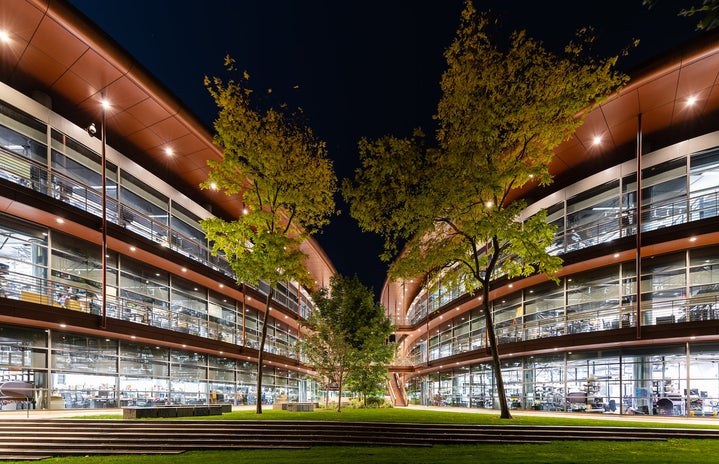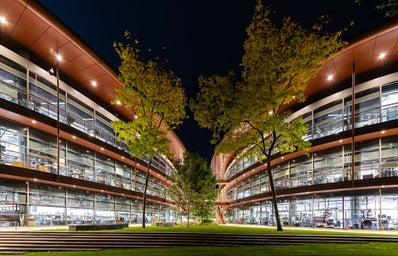Frank Lloyd Wright’s legacy is one of innovation with a deep respect for the natural environment. His priorities to honor the natural world have inspired other architects and designers to do the same, forever impacting the way society views design. Wright has inspired countless architects and designers to approach their work with creativity and sustainability in mind. As we continue to battle the challenges of urbanization and environmental degradation, Wright’s principles give us insight into ways we can build an environment that harmonizes with the natural world.
Wright’s architectural journey began at the firm of Adler & Sullivan in Chicago. While working at this firm, he developed the Prairie School movement, characterized by its low horizontal lines and its design to blend into the natural world. Other notable examples include the Fallingwater (1935) in Pennsylvania, one of his most popular pieces of work. Fallingwater is one of his many examples of Wright’s philosophy between design and nature.
Wright was not a man of sticking to one type of design. He experimented with others besides Prairie architecture. He focused a lot on building homes that would be accessible and affordable to the average American. These homes, known as Usonian homes of the 1930s, would feature open floor plans with large nature. This concept not only helped the home feel larger without having a physically larger space, it truly blended nature into the structure. This philosophy of combining nature and structure is called Organic architecture. His teachings were so influential that he founded the Taliesin Fellowship in 1932, a community that consisted of experiential learning in Wisconsin. Young architects would train and experience his philosophies and methods to plant a foundation.
His influence is evident in architecture as designers, environmentalists, architects, and philosophers continue to quote and honor his work regarding organic architecture. His ideas about sustainability and simplicity are themes seen everywhere, as more designers push this cohesion between design and the outside world.


